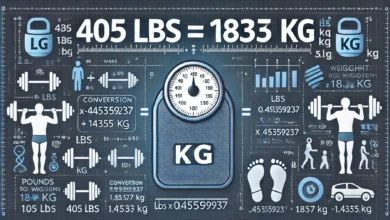Ultimate Guide to Partial Derivative Calc for Beginners

Understanding partial derivative calc is crucial for students and professionals working with multivariable functions. Whether you’re tackling calculus homework or applying it in engineering, this concept can seem intimidating at first. However, with a little clarity and structure, it becomes much easier to grasp.
What is Partial Derivative Calc?
A partial derivative calc involves differentiating a multivariable function with respect to one variable while keeping the others constant. This technique is essential in fields like physics, economics, and machine learning where variables often depend on more than one input.
Multivariable functions map sets of values to another set. Hence, knowing how each variable influences the result individually is where partial derivatives come into play.
Basic Concepts Before You Start
Before diving into calculations, it’s essential to understand the basic structure of functions with multiple variables. For instance, a function like: f(x,y)=x2+3xy+y2f(x, y) = x^2 + 3xy + y^2f(x,y)=x2+3xy+y2
requires you to calculate the derivative with respect to xxx and yyy separately.
Typically, partial derivatives are denoted using symbols such as: ∂f∂x,∂f∂y\frac{\partial f}{\partial x}, \quad \frac{\partial f}{\partial y}∂x∂f,∂y∂f
Knowing this notation is key to decoding and solving problems efficiently.
The Formula for Partial Derivatives
The general formula for finding a partial derivative is quite similar to single-variable derivatives. The trick lies in treating all other variables as constants.
- First-order partial derivative:
∂f∂x=Differentiate f with respect to x\frac{\partial f}{\partial x} = \text{Differentiate } f \text{ with respect to } x∂x∂f=Differentiate f with respect to x
- Second-order partial derivative:
∂2f∂x2 or ∂2f∂x∂y\frac{\partial^2 f}{\partial x^2} \text{ or } \frac{\partial^2 f}{\partial x \partial y}∂x2∂2f or ∂x∂y∂2f
These help measure how a function changes in more than one direction.
How to Perform a Partial Derivative Calc – Step-by-Step
To compute a partial derivative calc, follow these clear steps:
- Identify the function and variables.
- Choose the variable you want to differentiate.
- Treat other variables as constants.
- Apply basic differentiation rules.
- Simplify the result if possible.
Example:
Given f(x,y)=3x2y+2xy2f(x, y) = 3x^2y + 2xy^2f(x,y)=3x2y+2xy2, find ∂f∂x\frac{\partial f}{\partial x}∂x∂f:
- Keep yyy constant.
- ∂f∂x=6xy+2y2\frac{\partial f}{\partial x} = 6xy + 2y^2∂x∂f=6xy+2y2
Real-Life Examples of Partial Derivative Calc
Partial derivatives aren’t just academic—they’re highly practical. For instance:
- Meteorology: Temperature change over a region.
- Engineering: Stress distribution in a mechanical structure.
- Economics: Change in cost with respect to labor or materials.
By understanding these, professionals can make informed decisions and predictions.
Using Partial Derivatives in Optimization Problems
Optimization problems often rely on partial derivative calc to locate maxima or minima. These are points where a function’s rate of change is zero in all directions.
- Use first-order conditions to find critical points.
- Apply second-order tests to confirm maxima or minima.
- In constrained problems, use Lagrange multipliers.
Tools and Calculators to Simplify Partial Derivative Calc
Thanks to modern tools, you don’t always need to solve derivatives manually.
- Symbolab and WolframAlpha offer intuitive interfaces.
- MATLAB, Maple, and Python’s SymPy library allow for advanced computation.
- These tools also provide step-by-step explanations.
Common Mistakes and How to Avoid Them
It’s easy to make a few common errors when learning this skill:
- Mixing up total and partial derivatives
- Forgetting to treat other variables as constants
- Incorrect notation or simplification
Careful practice and using visualization tools can minimize these issues.
FAQs About Partial Derivative Calc
Q1. What is the difference between total and partial derivatives?
A total derivative considers all variable dependencies, while a partial focuses on one variable.
Q2. Can I use a calculator for partial derivatives?
Yes, many online tools provide accurate partial derivative calculations.
Q3. Why are partial derivatives important in real life?
They help model systems where variables change independently, such as in engineering or economics.
Q4. How do I know which variable to differentiate?
The problem will specify; otherwise, practice helps develop intuition.
Q5. Are partial derivatives used in machine learning?
Absolutely. They’re integral to gradient descent algorithms.
Q6. What’s the best way to learn this?
Consistent practice and visual learning tools work best.
Conclusion
Mastering partial derivative calc isn’t just about formulas—it’s about understanding relationships between variables in the real world. With clear steps, helpful tools, and consistent effort, anyone can become proficient in this powerful mathematical skill.




